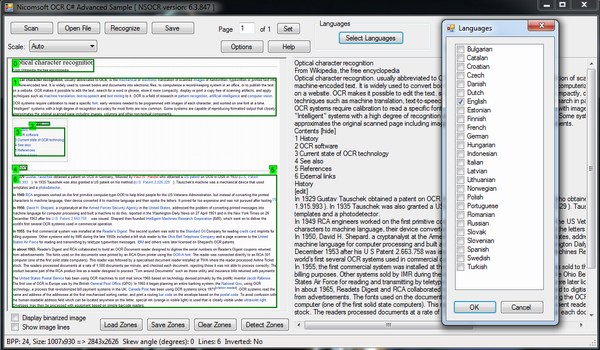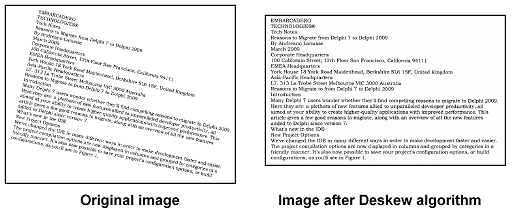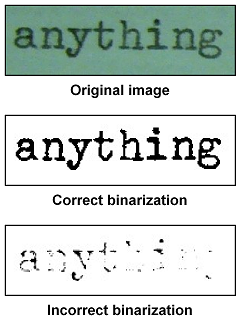Delphi XE8 inside look !
Delphi XE8 video
Delphi XE8 video
CutePDF Form SDK
The easiest and most affordable PDF forms technology available.
From: cutepdf.com
Author opinion:
"This SDK is the most easy to use Form SDK i have tested, it is very powerful because it is easy to learn and apply!, with a few lines of code you can build a complex forms application.
If you have a paper forms and want to convert it to fillable form, just scan and import it to the FormMax tools and place your fields by WYSIWYG editor, name the fields and publish it to PDF, HTML,... !!"
Company description:
CutePDF Form SDK allows you to empower your applications with the best
PDF forms technology. Whether you need to populate a PDF file's form
with data,
stamp images, retrieve data from an interactive PDF form, flatten
a completed form,
set preferences or add security to your PDF documents – with
CutePDF Form SDK, you can handle it all with just a few simple API
calls.
CutePDF Form SDK is based on the native COM (ActiveX)
architecture and provides dual IDispatch interface, callable from Visual
C++, Visual Basic, Visual FoxPro, VBScript, Active Server Pages, .NET,
Delphi, etc. It's perfect for multi-task, multi-threaded server
applications.
| Process Millions of PDF Documents
PDF Extractor's high performance engine performs
flawlessly under pressure making it an ideal solution for
processing large quantities of PDF reports, indexing large
PDF libraries, and more
|
Easy to use and implement
Even if your PDF documents have very complex structure
you'll find that PDF Extractor is very easy to use and
integrate into your existing systems |
|
|
No more extraction errors
PDF Extractor can process even damaged files that have
complex structure that would need to processed manually
otherwise |
Multiple language support PDF Extractor successfully converts PDF documents written in other languages with different characters |
 Want
to create, render, print, secure, merge, split and manipulate PDF files
with just a few lines of code on Windows, Mac and iOS? Enhance your
capability with Debenu Quick PDF Library: a powerful, royalty-free developer PDF SDK for
adding PDF functionality to your applications. With more than 900
functions for use with C, C++, C#, Delphi (version 4 to XE7),
Objective-C, Swift, Python, PHP, Visual Basic, VB.NET, ASP, PowerBASIC,
Pascal and more – it’s like your ultimate PDF toolkit. Used by
developers of all levels working with PDFs, it’s specifically useful for
getting products to market faster. It includes a robust API, and is
available in a variety of different editions for
use on Windows, Mac and iOS. Purchase options include: single developer
license, multiple developer license and source code license. Debenu
Quick PDF Library is licensed on a per developer, per platform basis.
Support is included for the most common programming languages. Work
smarter and faster today with Debenu.
Want
to create, render, print, secure, merge, split and manipulate PDF files
with just a few lines of code on Windows, Mac and iOS? Enhance your
capability with Debenu Quick PDF Library: a powerful, royalty-free developer PDF SDK for
adding PDF functionality to your applications. With more than 900
functions for use with C, C++, C#, Delphi (version 4 to XE7),
Objective-C, Swift, Python, PHP, Visual Basic, VB.NET, ASP, PowerBASIC,
Pascal and more – it’s like your ultimate PDF toolkit. Used by
developers of all levels working with PDFs, it’s specifically useful for
getting products to market faster. It includes a robust API, and is
available in a variety of different editions for
use on Windows, Mac and iOS. Purchase options include: single developer
license, multiple developer license and source code license. Debenu
Quick PDF Library is licensed on a per developer, per platform basis.
Support is included for the most common programming languages. Work
smarter and faster today with Debenu.| Create, render and print PDFs | |
| Secure, sign and protect PDFs | |
| Create, fill and edit PDF forms | |
| Split, merge, append and combine PDFs | |
| Convert EMF to PDF (Windows only) | |
| Extract text and images from PDFs | |
| Work with PDF Layers | |
| Edit initial view and document properties of PDFs | |
| Add text, images and barcodes to PDFs | |
| Advanced support for JavaScript, bookmarks, vector graphics, geospatial PDF | |
| Direct access functionality (load files from disk, not memory) | |
| Annotations, bookmarks and links for easy navigation | |
| Create Windows and Mac applications |

PostgresDAC new release
Microolap released the new major version 3.0.0 of PostgresDAC component suite.
It introduces Fetch-On-Demand asynchronous mode for TPSQLQuery, support for
built-in range types, support for geometric types.
New major 3.0.0 version introduces Fetch-On-Demand asynchronous mode for
TPSQLQuery, support for built-in range types, support for geometric
types.





|
||||||||||||||||||||||||||||||||||||
Direct Access Components for MySQL
MicroOLAP Direct Access Components for MySQL and Delphi/C++ Builder
(also known as MySQLDAC) is a Borland Delphi/C++Builder component set
for direct connect to MySQL database server.
DAC for MySQL allows you to create Delphi/C++Builder applications
without BDE, ODBC, ADO and without libmysql.dll.

|
TmySQLDatabase provides discrete control over a connection to a single database in a database application.
Use TmySQLDatabase when a database application requires any of the following control over a database connection:
|
|
TmySQLTable encapsulates a database table. Use TmySQLTable to access data in a single database table. TmySQLTable provides direct access to every record and field in an underlying database table. TmySQLTable can also work with a subset of records within a database table using ranges and filters. At design time, create, delete, update, or rename the database table connected to a TmySQLTable by right-clicking on the TmySQLTable and using the pop-up menu. |
|
TmySQLQuery encapsulates a dataset with a result set that is based on an SQL statement. Use TmySQLQuery to access one or more MySQL tables in a database using SQL statements. TmySQLQuery component is useful because it can:
|
|
TMySQLUpdateSQL applies cached updates on behalf of queries or stored procedures that can't post updates directly. Use a TMySQLUpdateSQL object to provide SQL statements used to update read-only datasets represented by TMySQLQuery component. A dataset is read-only either by design or circumstance. If a dataset is read-only by design, the application itself does not provide a user interface for updating data, but may institute a programmatic scheme behind the scenes. If a dataset is read-only by circumstance, it indicates that the MySQL returned a read-only result set. This usually happens for queries made against multiple tables. Such queries are, by SQL-92 definitions, read-only. |
|
TmySQLStoredProc provides functionality for using stored procedures in MySQL. TmySQLStoredProc works with two types of stored procedures: with or without a result set (for the first type use Open() method or set Active property to True, for the second - use ExecProc() method). When the procedure name is put in the ProcedureName property, the component fetches information on parameters of the procedure from the server and puts it in the Params property according to parameters' types. This component provides full support of IN, OUT and INOUT parameters. |
| TmySQLDirectQuery is component for high-speed (3-4 times faster then with TmySQLQuery component) data fetching. But it is not TDataset compatible. |
| TMySQLBatchExecute component can execute SQL scripts containing more than one SQL statement. |
| TMySQLMacroQuery is the descendant of TMySQLQuery component and supports all of its properties, methods, events, and functionalities. The difference is in Macros and MacroChar properties which help to modify SQL script text in design-time and run-time with easy. |
| TMySQLMonitor monitors dynamic SQL passed to the MySQL server. |
|
TMySQLDump allows to get SQL script with a dump of a DataBase. This script can be executed on another MySQL server by TMySQLBatchExecute component. |
| TMySQLTools component allows to run MySQL diagnostic and repair operations such as Repair, Check, Analyze, Optimize, Backup and Restore. |
| TBDE2MySQLDAC class is intended for the easy conversion of BDE Database Objects into DAC for MySQL Database Objects. |
Recent Comments